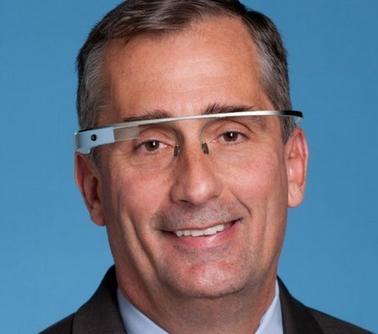 Intel, who wanted to build something in television, is now turning to wearable devices. Its CEO Brian Krzanich hopes to put Intel's chips into wearable devices by the end of the year. Although ambitious, it is still difficult to achieve technological breakthroughs.
Intel, who wanted to build something in television, is now turning to wearable devices. Its CEO Brian Krzanich hopes to put Intel's chips into wearable devices by the end of the year. Although ambitious, it is still difficult to achieve technological breakthroughs. Although Intel’s newly appointed CEO, Brian Kozych, did not quite approve of his predecessor’s proposal for Internet TV, the CEO has always had a keen interest in Google Glass and hopes that Intel’s own chips can be used in the end of 2013. On a wearable device. “We are still very cautious about the Internet TV program,†Kozychic said when Intel planned to launch IPTV this year, but his predecessor, Paul Otellini, had a soft spot for the television business. Despite considerable ambitions in the television field and some good feedback from early testers, Intel has yet to reach any agreement on television content. But compared with plans in the television field, Kirzych has more confidence in wearable devices.
"We are experts in chips and mobile devices. We promote Moore's Law," Kozic told the media at a press conference. "But we are not experts in TV content, we are still very cautious."
Intel’s prudence is justified, and the television industry is not so easy for any electronics company. Apple has always wanted to start its own television service, hoping to provide users with their favorite channels without being forced to watch bundled TV programs that they do not like. Apple wants to stand out from the TV world in this way.
However, TV content owners like those bundled TV content because these TV programs are more profitable than those popular programs and channels. Intel is also said to be facing similar difficulties with Apple, even though Intel's quotation exceeds 75% of other existing television networks.
But Intel is likely to take further action on wearable devices. Keczy admitted that in interviews with reporters, the pockets were actually Google glasses. He said that wearable devices can distribute computing power around the body rather than just distributing computing power to smartphones, tablets or laptops. He predicts that wearable devices will become more and more relevant to human life over time.
As for when Intel's chips will enter these devices, the CEO is ambitious. "I think at the beginning of this year, early next year, you will see the equipment that loads our chips," he said. "We are trying to fit our chips into these devices and produce some of our own products, understand how to use them and create an ecosystem."
Last year, Intel’s chief technology officer Justin Rattner stated that Intel is developing a smart watch, but there is no comment on whether this watch is a partnership with Apple Watch. Since Rattner announced the resignation, Intel said that the smart watch plan will retreat. Ratner himself did not mention what Intel's smart watches will do.
It will be a daunting task for Intel to load its own chips into wearable devices. Historically, smartphones and other mobile devices have been using ARM-produced processors, mainly because these processors are more energy-efficient than Intel's x86 chips. In a wearable device, saving energy is even more important. No one wants to bring a heavy battery when wearing these devices.
For this reason, Google Glass chose a relatively old processor - similar to the one used in smartphones in 2011 - to take full advantage of the mini 570mAh battery.
Both Rebecca and Intel CEO Renee James have stated that they will continue to monitor the performance of Intel Atom chips on mobile devices to catch up with ARM processors as soon as possible. "We think Atom is very important," said Ke Zaiqi, "Atom uses the same cutting-edge technology, some of which are even more advanced than Core."
N-NET Media Converter has over 300 models of Managed and Unmanaged Media Converters to extend copper to fiber,Options in Multi-mode dual fiber, single mode dual fiber, single mode single fiber. Topology Type:fast ethernet(10/100M) ,gigabit(10/100/1000M),10G,Standalone 802.3ah Managed Media Converter,Chassis managed media converter.Extend network distances up to 120km.N-NET is proud of the reliability of all our Media Converters. The high MTBF rates can be found on the Hardware Specs for each Perle Media Converter.
Media Converter
Media Converter,Fiber Converter,Ethernet Converter,Small Fiber Media Converter
Shenzhen N-net High-Tech Co.,Ltd , http://www.nnetswitch.com